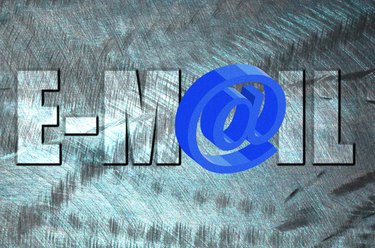
The process for viewing erased messages on the computer varies between different software and servers. Tagged messages are messages that are marked spam, filtered to folders based on addresses, whitelisted or blacklisted. Whitelists are messages in which the sender or subject is always sent to the inbox, no matter what. Blacklists are similar to spam messages, while spam messages may automatically be reported to server admins, blacklisted items are not. For example, if a friend constantly forwards email threads you may blacklist any message he sends that includes "FW." On the other hand, you would mark other messages from unknown senders as spam. Tags can usually be adjusted in the program/server's settings. All messages are saved on the email's server (even deleted ones) for at least 12 to 24 hours.
Step 1
Check your deleted items or the tagged folder. If that fails, try a search. Go through all the folders that are associated with the tags. For example, a custom tag may be enabled for all emails from a certain domain, like your work. These emails would then go to the "Work" folder you designated. Most email clients have a search feature.
Video of the Day
Step 2
Use a data recovery software tool. If the emails have been deleted using a desktop mail client like Outlook or Thunderbird, traces of them still may be on the computer. There are a number of software tools that will help recover deleted emails. Many of these tools are similar to what data recovery criminal forensic teams use. See Resources for a list of software titles.
Step 3
Contact the server administrator, and ask him to locate tagged messages for you. The server, your work's IT department or private email host will keep old messages, even if they have been deleted from the account. The more detail you have about the message, the better, and contact the administrator as soon as possible. Private servers are more likely to respond faster than free servers.
Video of the Day